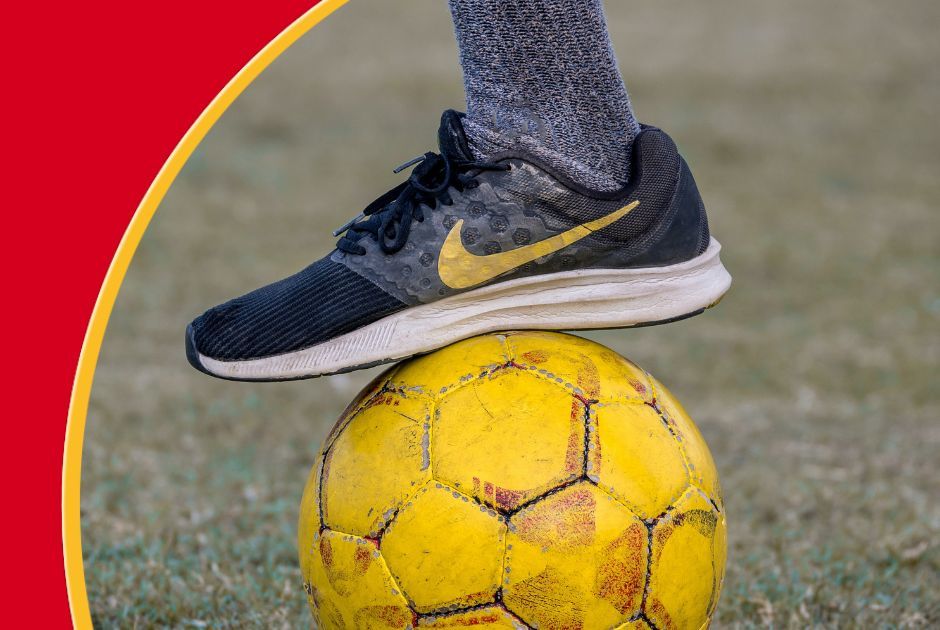The 8 Most Common Football Injuries
Posted on 18th October 2023 at 10:27
Football is a physically demanding sport that can take a real toll on your body. From bone-crushing tackles to lightning-fast sprints, players are susceptible to a variety of injuries.
In this blog, we will explore the eight most common football injuries, their causes, symptoms, and treatments. By understanding these injuries, players, coaches, and fans can take proactive measures to prevent and manage them.
ACL injuries
One of the most dreaded injuries in football is an ACL (anterior cruciate ligament) tear. This injury occurs when the ligament that stabilises the knee joint is stretched or torn. ACL injuries are typically caused by sudden changes in direction, pivoting motions, or direct blows to the knee.
Symptoms include a popping sound at the time of injury, severe pain, swelling, and instability in the knee joint. Treatment often involves surgery followed by extensive rehabilitation to regain strength and stability in the knee.
MCL injuries
The medial collateral ligament (MCL) runs along the inner side of the knee and helps to stabilise it. MCL injuries are commonly caused by a blow to the outer side of the knee or excessive twisting of the joint. Football players often experience MCL injuries due to collisions with other players or awkward landings.
Symptoms include pain, swelling, and instability in the knee. Treatment for MCL injuries may involve physical therapy, bracing, and rest. Severe cases may even require surgery.
Torn meniscus
The meniscus is a rubbery cartilage that acts as a cushion between the thighbone and shinbone. A torn meniscus often occurs due to sudden twisting or turning of the knee while bearing weight. Football players can experience this injury during abrupt changes in direction or tackles.
Common symptoms include pain, swelling, stiffness, and a catching or locking sensation in the knee. Treatment options range from conservative measures like rest, ice, and physical therapy to surgical repair or removal of the damaged meniscus.
Ankle sprains and strains
It will come as no surprise that ankle sprains and strains are among the most prevalent football injuries. They occur when ligaments and muscles around the ankle are stretched or torn due to excessive force or awkward movements. This can happen during tackles, pivoting, or landing improperly.
Symptoms of ankle sprains and strains include pain, swelling, bruising, and difficulty bearing weight. Treatment typically involves RICE (Rest, Ice, Compression, and Elevation), along with physical therapy for rehabilitation.
Muscle contusions
Muscle contusions, or bruises, are a common football injury resulting from direct impacts or collisions. These occur when a forceful blow compresses the muscle against underlying bone, leading to bleeding and swelling.
Symptoms of muscle contusions include pain, tenderness, swelling, and discoloration of the affected area. Treatment often involves applying ice, compressing the area, and rest. Severe cases may require medical evaluation to rule out more serious injuries like fractures.
Torn hamstrings
The hamstrings, a group of muscles located at the back of the thigh, are prone to tears in football. Torn hamstrings often occur during sprinting, kicking, or sudden accelerations.
Symptoms include a sudden sharp pain in the back of the thigh, swelling, and difficulty walking or running. Treatment involves rest, ice, compression, and physical therapy to rehabilitate the injured muscles.
Shoulder tendinitis
Shoulder tendinitis is an inflammation of the tendons surrounding the shoulder joint. Football players frequently experience this condition due to repetitive overhead motions, such as throwing or tackling.
Symptoms include pain, tenderness, and stiffness in the shoulder. Treatment usually involves rest, ice, physical therapy, and anti-inflammatory medications. Modifying the throwing technique and strengthening the shoulder muscles can also help prevent future flare-ups.
Shoulder separation or dislocation
One of the much more serious injuries, shoulder separation and dislocation happen when the collarbone separates from the shoulder blade or when the upper arm bone pops out of the shoulder socket, respectively. Football players are susceptible to these injuries due to high-impact collisions or falls.
Symptoms include severe pain, swelling, deformity, and limited range of motion in the shoulder. Immediate medical attention is necessary to reduce the dislocation and immobilise the joint. Treatment may involve conservative measures or, in severe cases, surgery to stabilise the shoulder.
Suffering with a sports injury and think you’ll benefit from massage therapy? Contact our friendly team today!
Share this post:

